Mugolio, a dark, aromatic syrup imbued with the flavor of pine cones, is the poster child for the kind of crazy cool, Illuminati-esque foodstuff foragers have access to, all for the price of a hike, or even less, depending on how close you are to some pine trees.
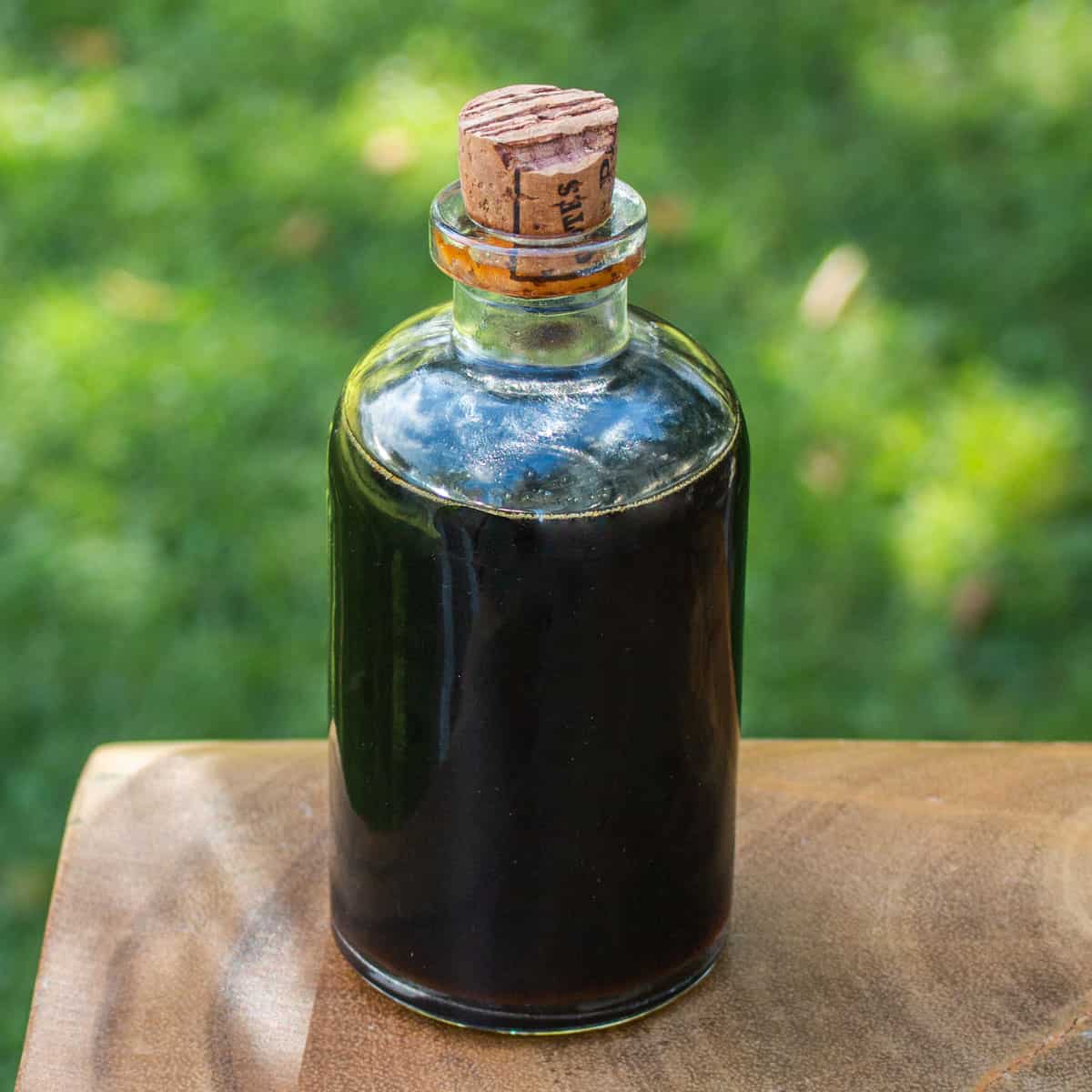
The syrup came on my radar when my friend Dan Farmer gave me a little jar of some he made to try. I remember it being good, but I forgot about it until I opened the Salt Cellar, and started making my own from spruce tips, which is excellent, but not quite the same as pine cone syrup (for the record both are great).
Mugolio is now still a bit of a chef secret, and available through elite specialty distributors, but the price is staggeringly high, exorbitant even, when you consider you can make nearly the exact same thing at home, for less than it costs to make a cake.
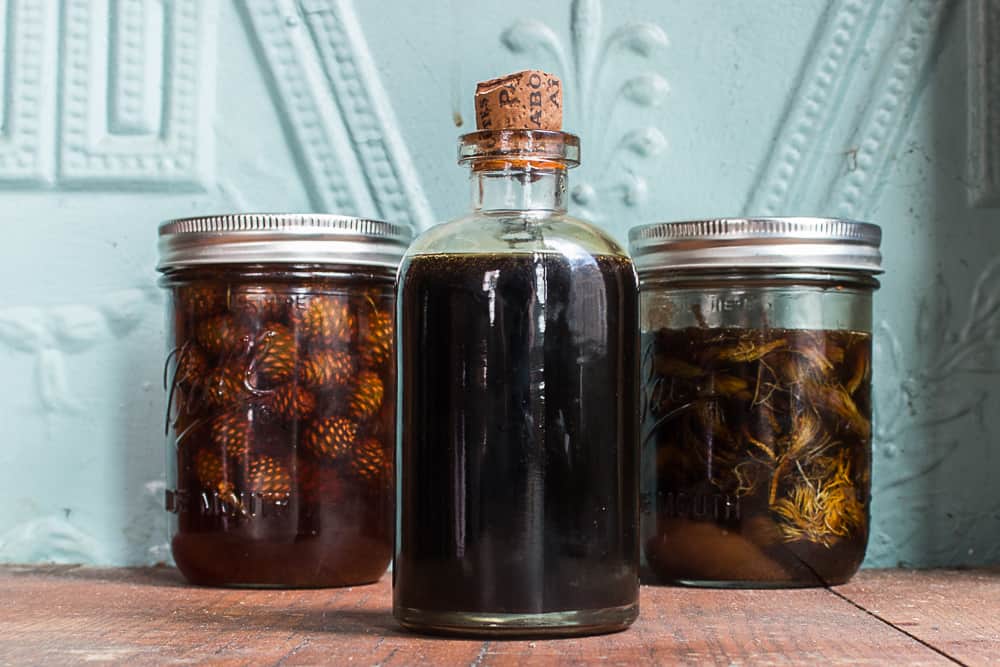
A chef secret that takes months to make
The cost of mugolio is not found in ingredients, but is paid in time. How much time is certainly up for debate, and you’ll notice my recipe turns around a lot quicker than burying a jar of pine cones and sugar in the yard and digging it up the next year (an actual recipe from Romania). You’ll want to wait at least a month for a good pine syrup, although aging it longer can be fun.
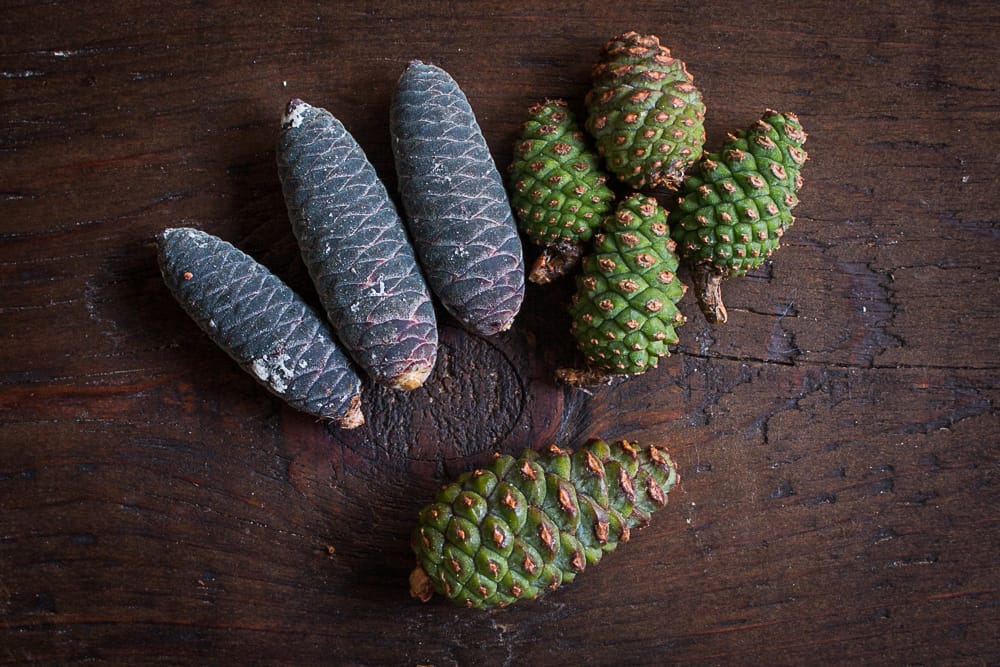
Mugolio: more than just pine cones
Real quick, some reality. I use the word mugolio interchangeably for syrups made from numerous tree parts, if you look around you’ll see mugolio usually refers to a syrup made from the young cones of mugo pine (Pinus mugo), harvested at a specific time of year, under the strictest of conditions, blah, blah, blah.
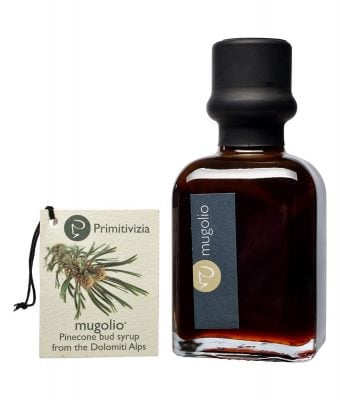
I’ve made all kinds of similar sugar based products from all kinds of conifer parts, and it isn’t some difficult, arcane thing you can only do in the light of a full moon— just the opposite.
Making mugolio is easy, and there’s a very forgiving time window for harvesting cones, or other things products like cedar cones, wintergreen, juniper, or spruce tips. All of the aforementioned making excellent syrups in their own right.
There’s something special about the pine cone syrup though. Pine cones hold more water than any other thing I’ve used, and they also ferment during the maceration process, vigorously.
The day after you combine the pine cones and sugar, there will look as if there was a rush and release of water—what was once a solid packed jar of pine cones and sugar is not 75 % full and liquid.
Species of unripe pine cones I've used to make syrup
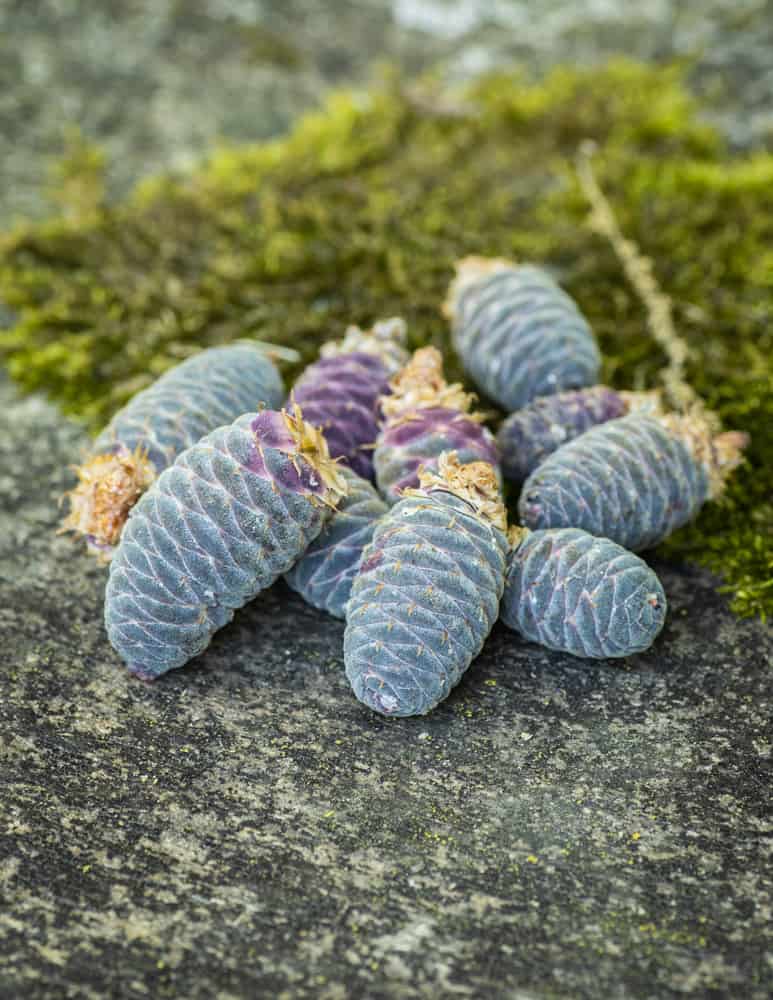
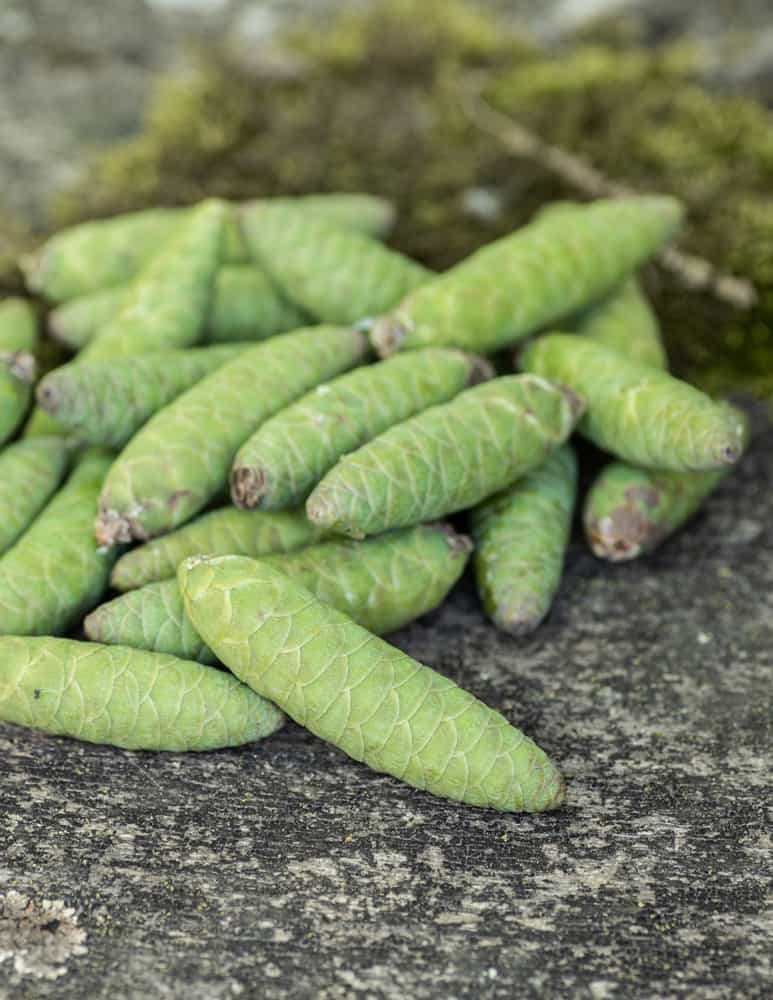
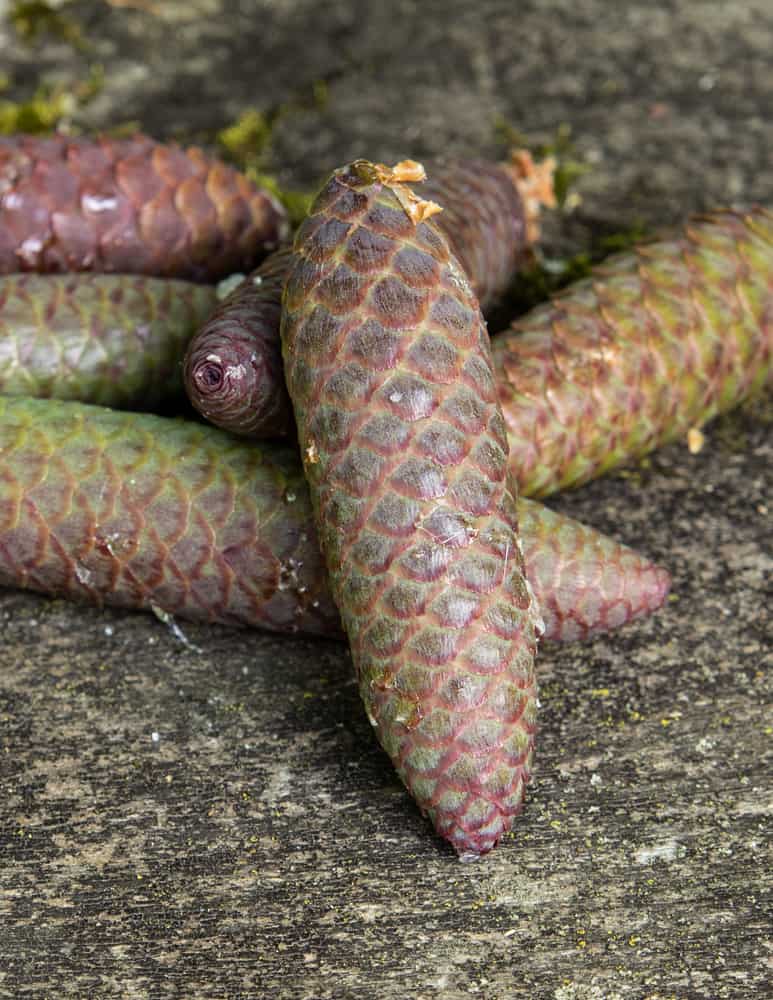
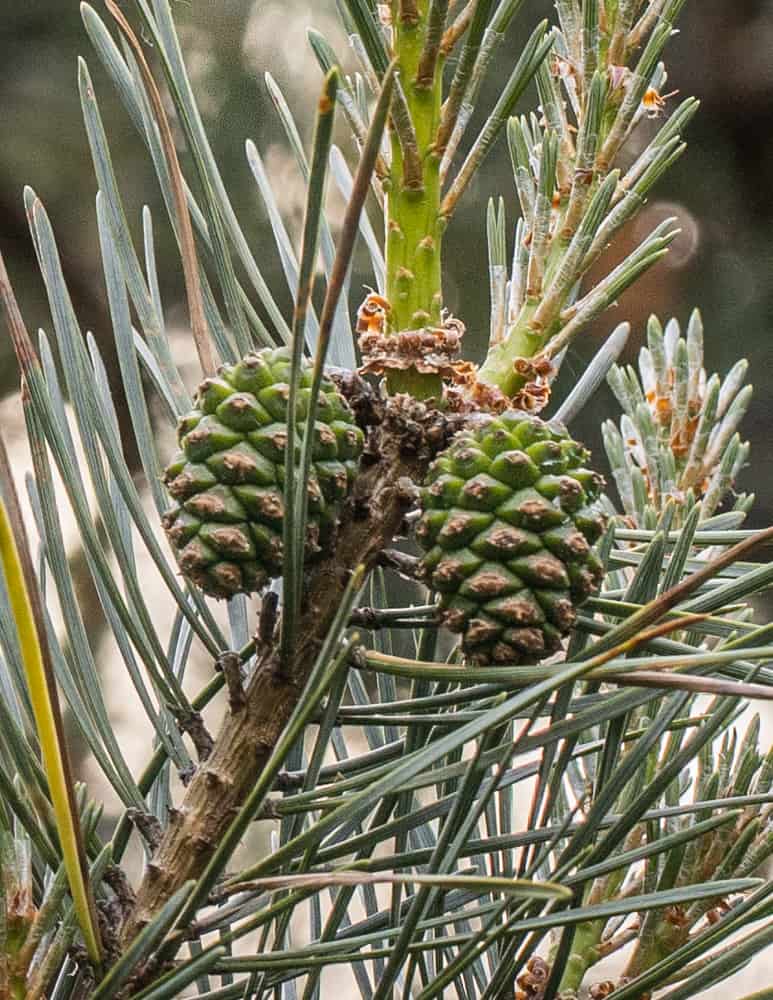
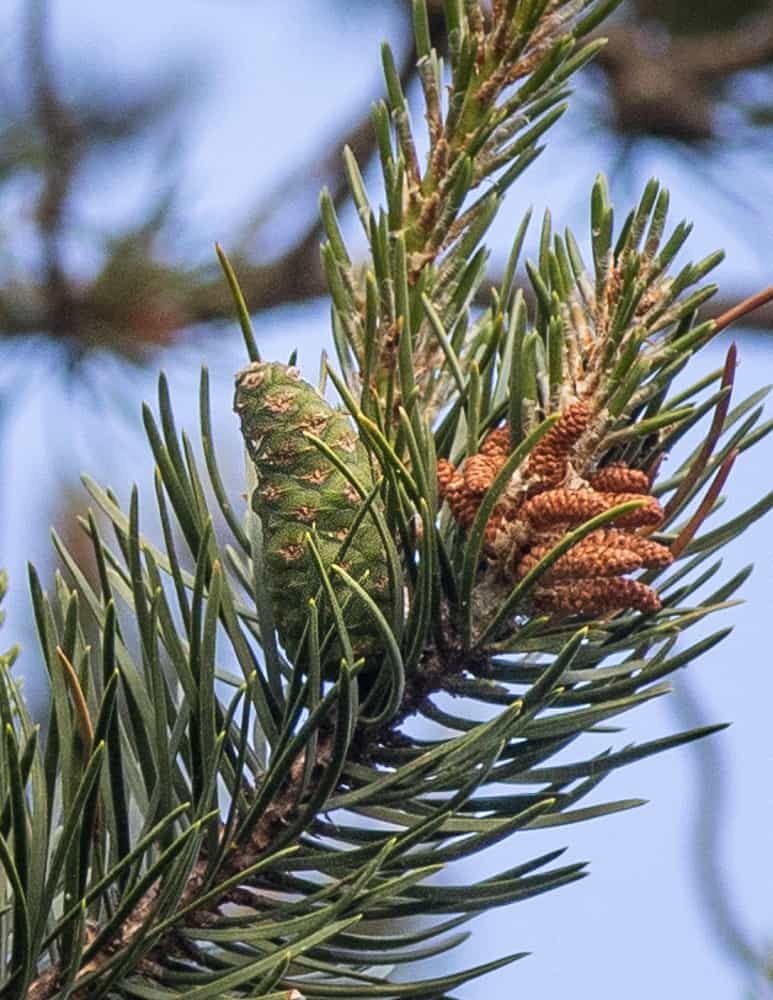
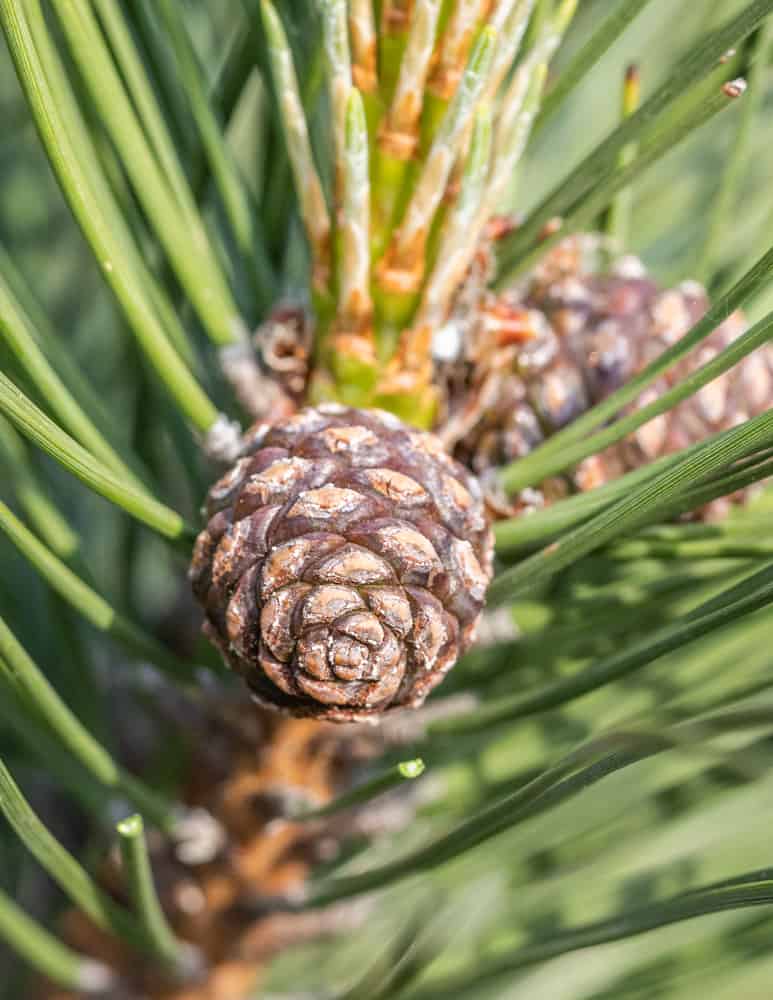
Variation in flavor between species
One of the most fascinating things about mugolio is that every species of tree you harvest unripe cones from will impart a noticeably different flavor unique to the finished product.
Once I started to notice the different flavors, I made a point out of trying to "mugolio" as many different species of unripe coniferous cone I can, and I found some fascinating things. Here's a quick breakdown of the differences between flavors I taste.
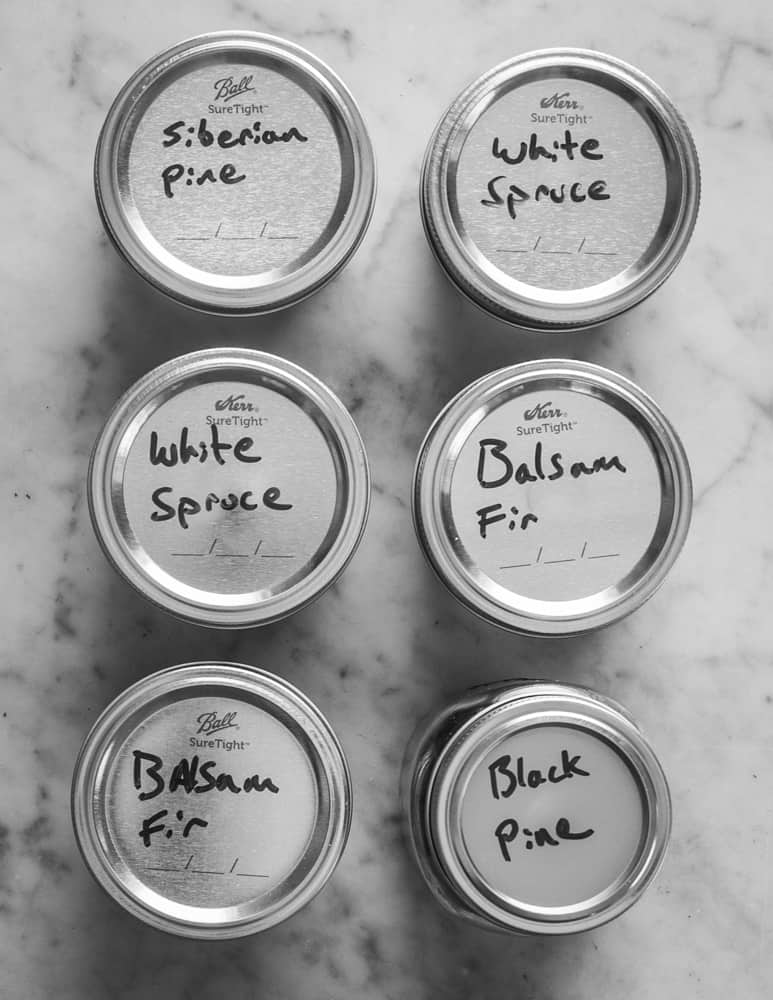
Pinus/Pines
Mugolio made from pinus cones have a resinous, assertive taste.
Picea/Spruces
Spruces lack the aggressive resinous flavor of pines and are the most subtle of all I've tasted. Instead of the resinous taste, spruce cones, just like spruce tips, have a citrusy note to them, and so will syrups made from their cones.
Thuja and likely others/Cedars
The only cedar I've made mugolio with is the green cones Thuja occidentalis, since they're easy to find in landscaping. It has a taste exactly like the aroma of fresh green cedar, a bit in between spruce and pine mugolios.
Abies/Firs
Of all the syrups here, and all the different flavors, the syrups I've made from balsam fir are the most delicious.
Firs have a resinous punch like pine mugolios, but it's slightly less aggressive, and most noticeably, comes with strong notes of warm spices like cloves, allspice, and cinnamon.
Unfortunately, mature balsam fir trees, at least around me, seem to only want to grow cones at the very top of the tree, which can make getting enough for a batch of syrup tricky.
Using other conifer products
Other tree products like spruce tips, pine tips and cedar cones I've worked with are more dry, and may not ferment during the maceration process, but they can still make a fine syrup.
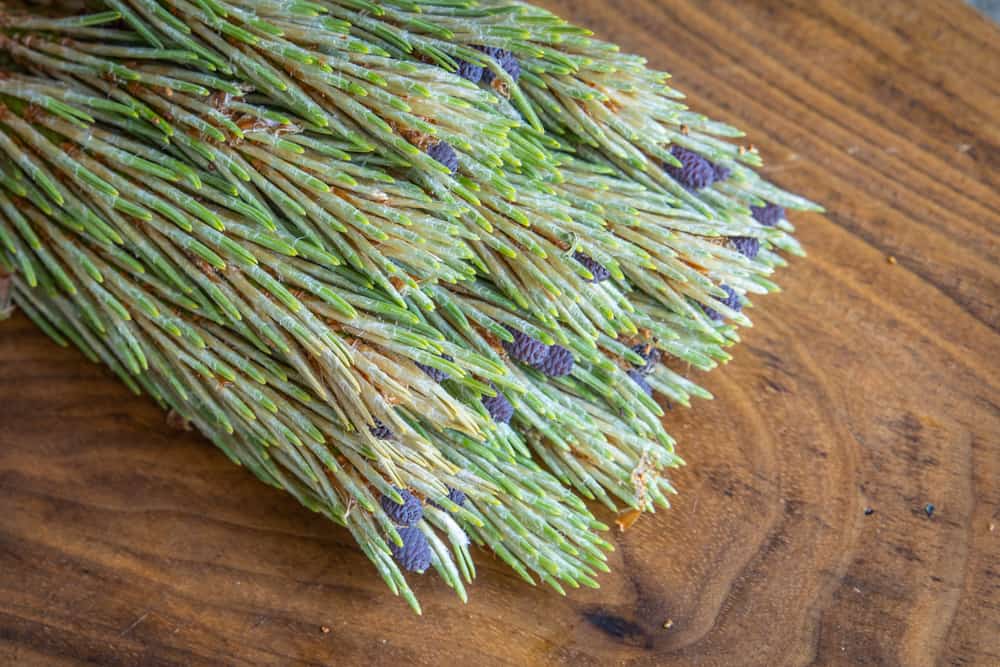
The point is: you can make syrups like this out of all kinds of things, and everyone I’ve had has been good. If you have spruce trees near you, take a look at the basic spruce tip syrup too, which is nearly the same, sans the fermentation. Here's a few things I've used:
- Unripe eastern white cedar cones (Thuja occidentalis. This could can be an abortifacient in high doses)
- Juniper berries (Juniperis virginiana)
- Spruce tips (many species)

The best part is figuring out how to use it. Somethings take some experimentation, mugolio not so much.
You can literally put it on just about anything where maple syrup would be good, and you’ll be glad you did. The syrup has the essence of pine, but with none of the strong tannins you’d expect If you took a bite out of a pine cone—just pure piney goodness.
Harvest young pine cones in spring or early summer
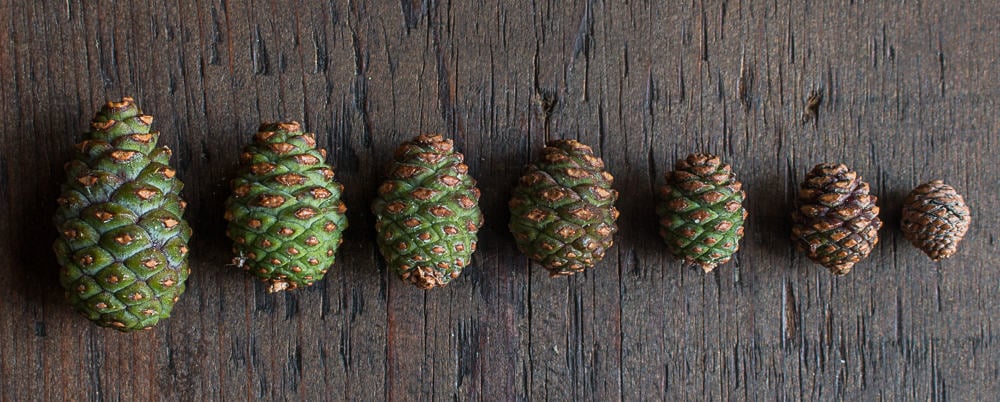
Most importantly, you are looking for unripe pine cones in the spring and early summer, not the fall, not the winter. Opened cones are not to be used.
This is up for debate, but my favorite comes from green cones as they contain more water. Purists might say that you need to harvest pine cones when they're the size of a pinky nail, or some other arbitrary size.
I can tell you after making this for years now, that any of the pine cones pictured in the image above will make a fine syrup, but smaller cones will make a syrup with a much stronger flavor, strong enough that some people may not like it.
Another good rule of thumb I've found is that whatever cone you're picking will probably be sticky and exuding resinous, sticky liquid at a prime stage for making pine cone syrup.
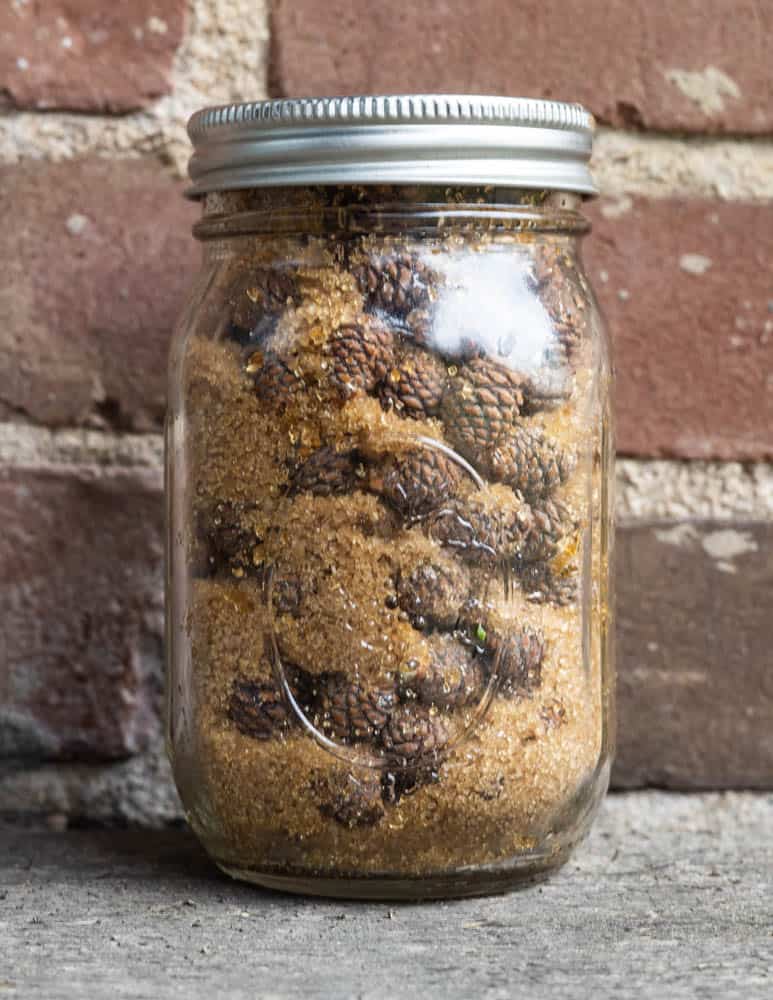
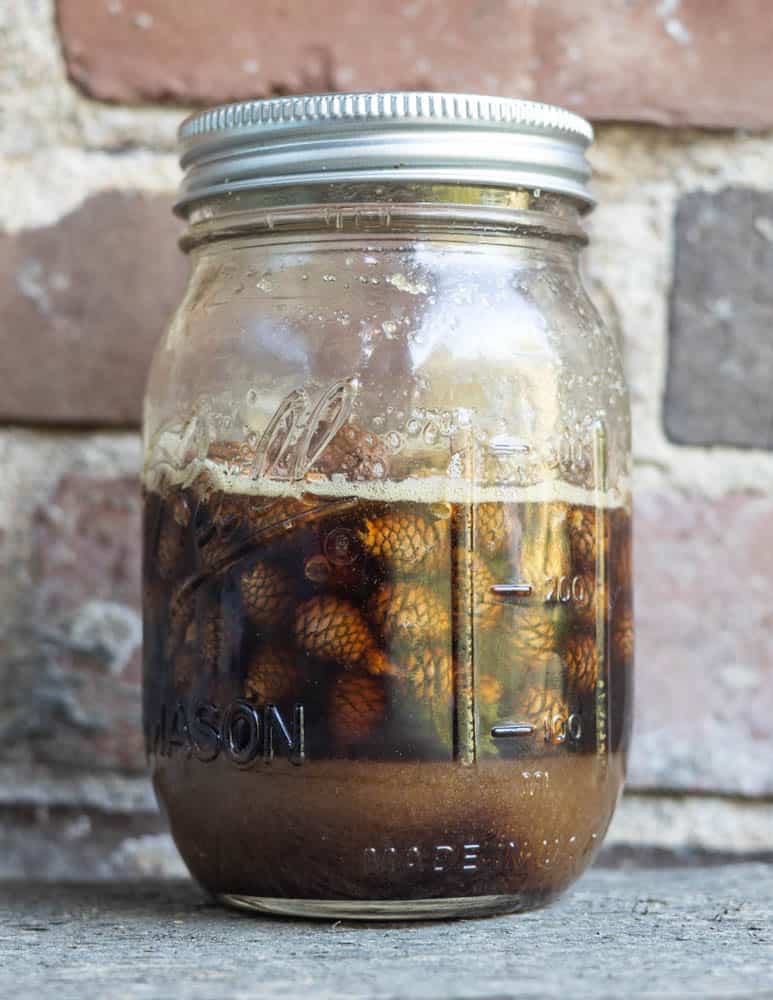
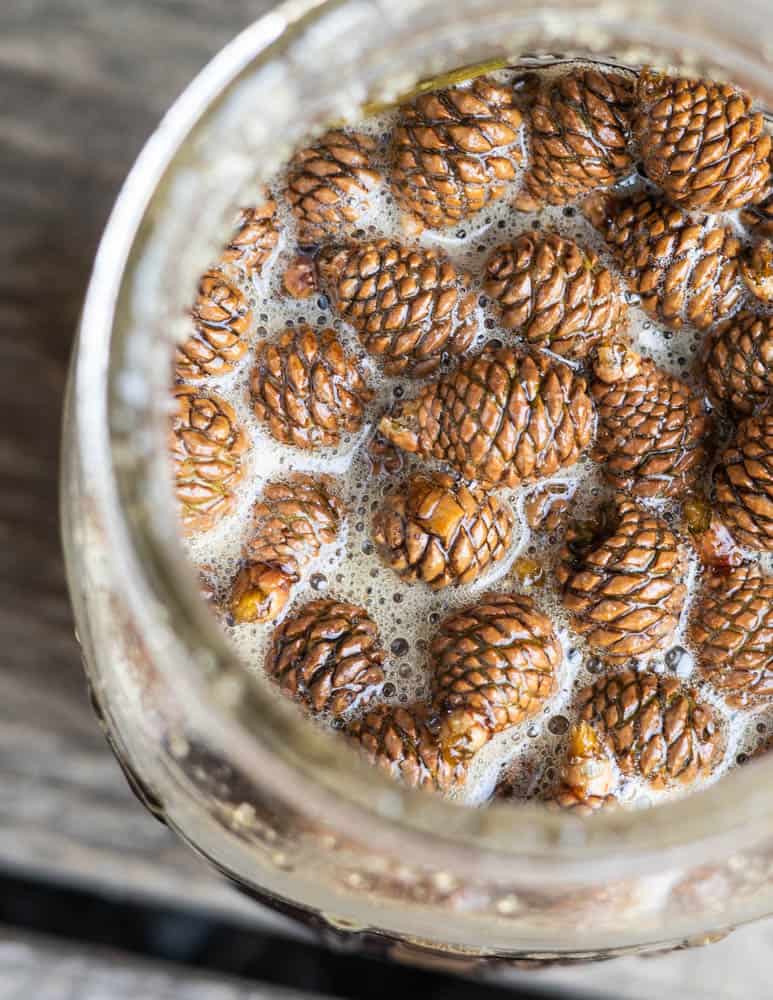
Green cone=higher water content
Larger green cones hold more water in them which makes syrup making much easier, and also allows for some fermentation in the process, which adds fun flavors.
As long as the cones are meristematic and tender, and can be cut through with a knife, even if it's into pieces with long cones like white spruce or balsam fir, they will make a good mugolio. The only cones that won't work, are mature, tough, barky cones, like those you'd see on the ground.
Using very young pine cones
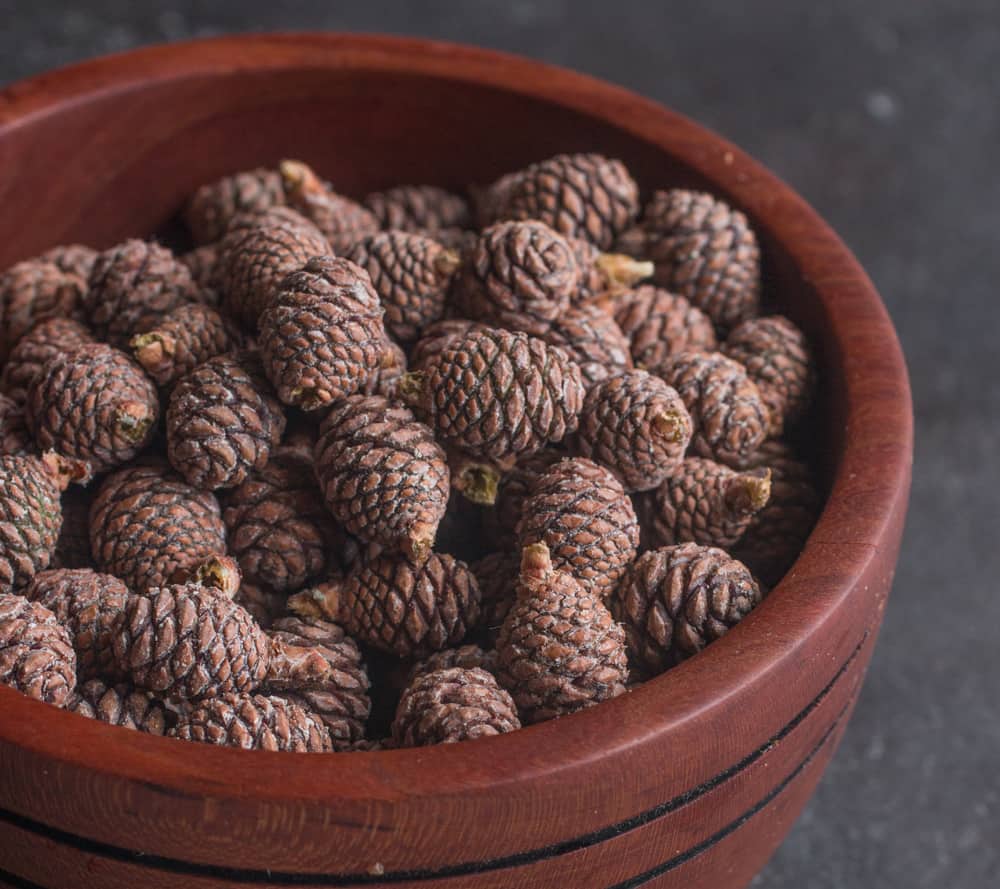
You can use young pine cones, but they're smaller and don't hold as much water as cones that are green, so they're not ideal here.
If you really want to try with very young pine cones, try chopping them up medium to make it so more cones can be fit in a jar, which means more water, meaning an easier syrup. You can also add a splash of water to help it on it's way.
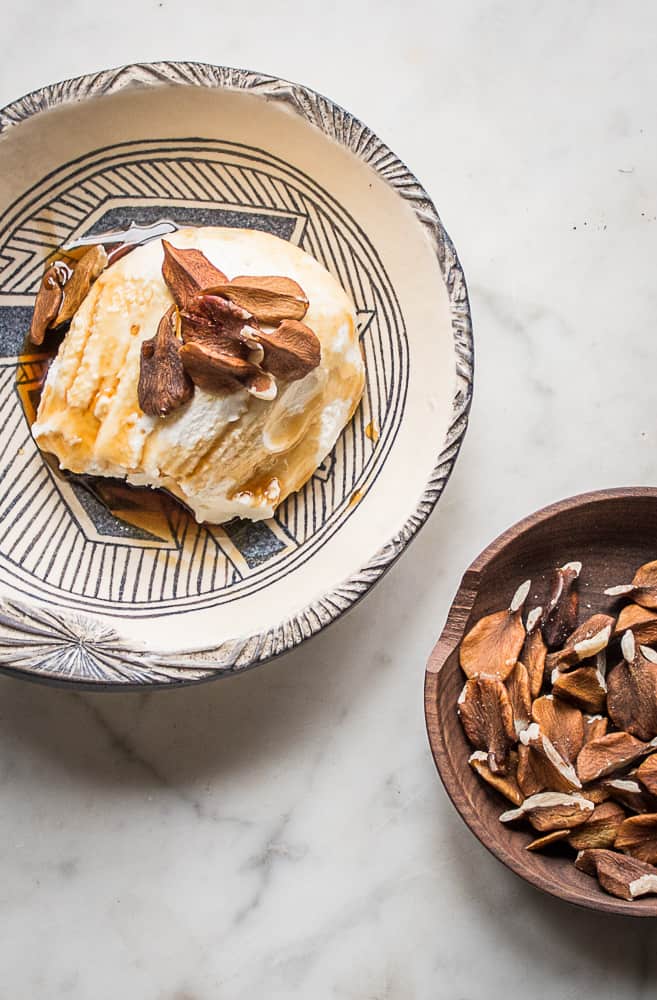
Is it safe?
Yes, this is absolutely, positively safe, and there's no need to worry about botulism. I can't speak to the exact science of spruce tip and cedar cones syrups, (also safe) but pine cone syrup is especially safe as it ferments as it macerates, due to the higher water content of the cones if harvested at the green stage.
The extended fermentation lowers the pH, making it shelf stable. Remember that sugar is a preservative, and conifer products are all naturally acidic, which is a preservative in itself.
Consider using gloves
The most prime pine and spruce cones for making syrup will be plump, but still unripe. At this stage, most of them will be very sticky and oozing a sappy resinous substance that will quickly coat your hands and will stay for hours. Consider wearing gloves to avoid sticky hand syndrome.
Choosing the right sugar
Some recipes might call for white sugar, and while it will work and give you a flavored syrup, white sugar is more dry, and I find the clear color far less attractive than the caramel color that organic, unrefined turbinado-style sugar or even light brown sugar or a similar substitute will give.
I try to avoid using plain white sugar when I can, and I highly doubt that original mugolio recipes used such highly refined products when the first adventurous people crafted them.
Use a good sugar that you can feel good about eating, and drizzling over everything, because you'll want to drizzle it, on, well, everything. Here's a list of sugars that will work
Turbinado
Turbinado is slightly more dry than commercial brown sugars, but it has an excellent flavor.
Light, golden, or dark brown sugar
These are some of the most versatile and affordable, but I suggest using a high quality organic brand. The varying molasses content of the different colors of sugar is negligible in regards to the flavor of the finished syrup.
Maple sugar
Maple sugar is the most expensive you could use, and in my opinion is not the most ideal as it's prone to crystallization from my experience. It is delicious though. If you'd like to harness the flavor of maple with your pine cones, you can just toss pine cones into maple syrup at a ratio of 1 cup of pine cones to 1 lb (2 cups) of maple syrup.
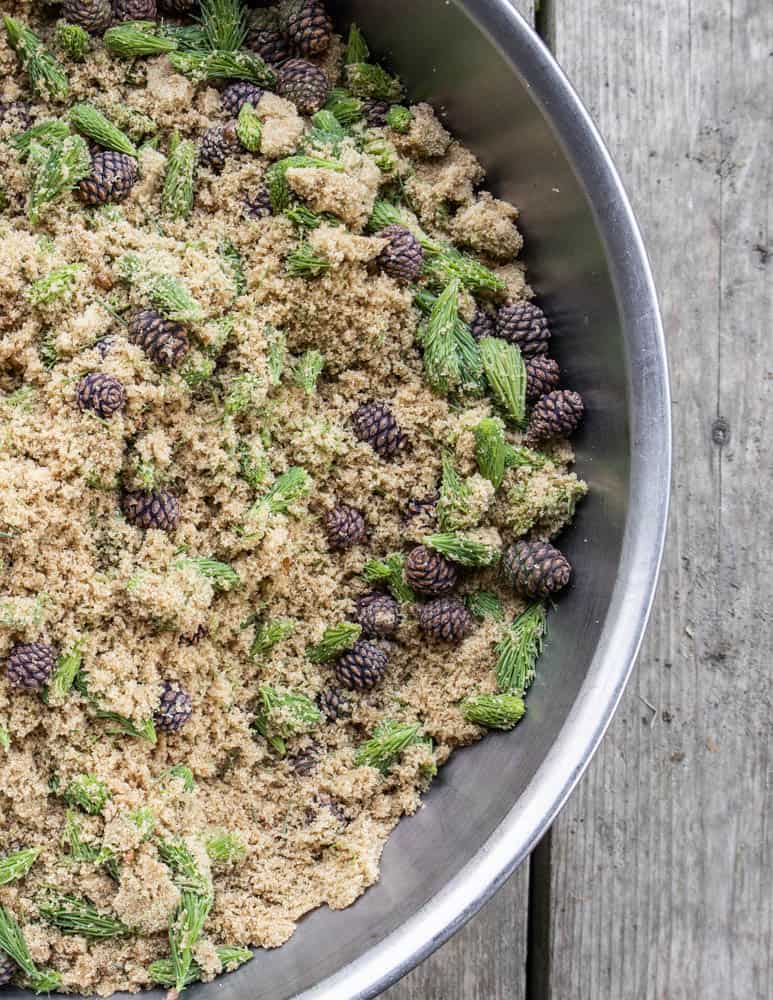
Zirbenshnaps
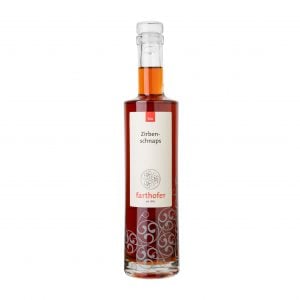
This stuff is unique enough that it needs a special mention. Zirbenschnaps is a liquor made with pine cones.
I’m not an expert on distillation by any means, but I’ve been working with a distillery to make similar products, and one thing we’ve been toying around with is making a rendition of it by simply using it as the sweetener in a macerated liquor.
The traditional zirbenshnaps has a red tone to its color, which makes me think they’re using a syrup made from fresh pine cones cooked immediately—not aged.
I know there’s also birch schnaps, and that’s made with reduced birch syrup, so I think using mugolio would be fine. Currently I know zirbenshnaps is only sold at ultra high-end restaurants in my area.
Whatever you make with it, it’s one of the most fascinating and delicious condiments made from wild ingredients I know of.
Making Large Batches
I occasionally make very large batches of syrup, 2 or 3 gallons at a time. Here's a few tips on doing that if it's something you're interested in, especially as this is such a fun (also cheap) and interesting thing to give as gifts. The tips below are intended for those people making 1 gallon batches and up at a time.
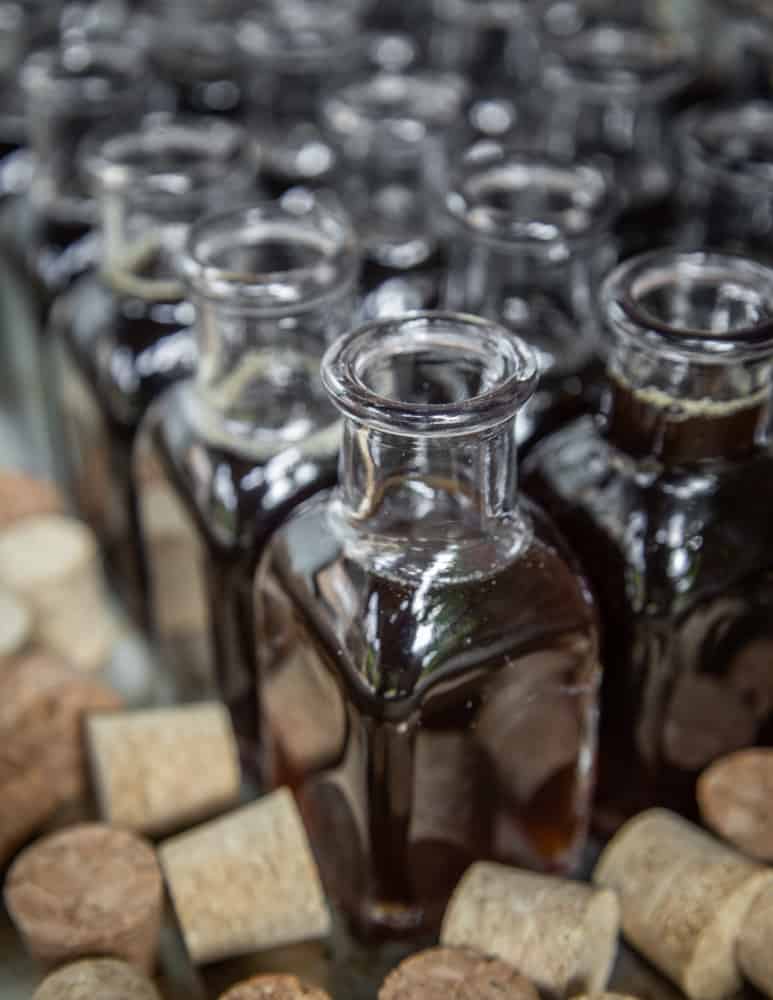
Skimming the foam
Similar to maple syrup, when you cook large quantities of the syrup, it will begin to froth and foam at the top and will double in size quickly.
Some cones seem to create more foam than others, especially Norway Spruce. When you notice foam during the cooking process, do your best to skim it off with a spoon and discard.
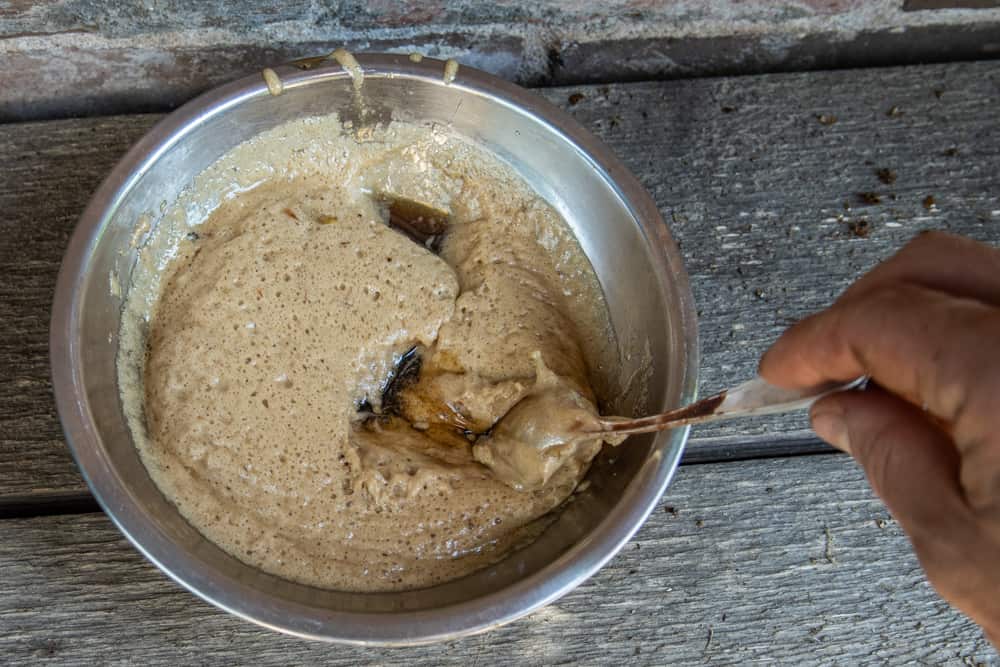
After you bring the syrup to a simmer and strain, put it back in the pot and bring it to a simmer again, let it rest for a minute or two so the syrup can settle and return to it's original volume. If you don't do this, you run the risk of having jars that are half full after settling.
Canning for long-term storage
Pour the piping hot syrup into large jars, or, for smaller ones, pour the syrup into a pitcher with a spout, and pour directly into canning jars (4 oz mason jars make a great gift). Fill the jars nearly to the brim, leaving about ⅛ inch headspace, then, working quickly, screw on the lids tight and turn the jars upside down.
You don't have to water bath-process this as it's basically the same sugar concentration as maple syrup, just make sure your jars are clean. The jars will seal naturally but should be refrigerated after opening.
Here’s a few ideas for using it, and a few things yet on my list to try.
Ideas for using
- Drizzled on pancakes, crepes waffles and other things primed for syrup.
- Use it to flavor whipped cream
- Excellent drizzled over soft cheese like mascarpone, labneh, chevre, etc.
- Drizzled over fresh fruit
- Using in place of honey, I love drizzling it over bowls of warm buttered wild rice with nuts, fruit, and yogurt for breakfast.
- It’s good in desserts, added in small amounts like you would use honey. Dairy based desserts like ice cream, panna cotta and custards of all kinds can just be seasoned to taste with it.
- Try adding small drizzles to salads, or whisking into vinaigrettes.
- Mixing it with a splash of vinegar just to loosen it a bit makes a good brush on or glaze for hams, etc.
- One of my friends adds it to whiskey
Mugolio, or Pine Cone Syrup
Equipment
- 1 quart mason jar or similar
Ingredients
- 2 cups (8 oz) young red pine or other pine cones (soft enough to be cut with a knife) *
- 2 cups (16 oz) organic brown sugar or other brown sugar, just not white which is dry and makes a clear syrup
Instructions
Maceration
- Rinse the cones in warm water to remove any foreign particles if needed. I don't usually wash them. Inspect your cones for any that have holes or insects and discard.
- Combine the sugar and pine cones and pack into a quart jar, then allow to macerate (age) for 30 days. Put the jars in a sunny place where they will get warm during the day, which will help ward off mold.
- During the first few weeks of maceration, open the jar occasionally to release carbon dioxide as the mixture will ferment vigorously. Shake it occasionally to help it on it's journey.
- As the cones release their water, the volume of the contents in the jar will decrease. Sugar slush will settle on the bottom and is natural. If you have more cones and sugar, you can add it to fill up the jar. The less air in the jar, the lower the chance of mold.
Finishing and storing
- After the maceration is complete, scrape the sugar slush and pine cones into a pot and add two tablespoons of water for each quart jar. Bring to a brisk simmer and heat through to melt the sugar, then strain and bottle. Discard the cooked cones and thank them for their service.
- All you need to do is bring the temperature up and melt the sugar, if you reduce the syrup too much it will crystalize after it cools. For the amounts listed it should take about 5-10 minutes.
- The syrup is stable at room temperature since the fermentation lowers the pH, but will keep the best flavor in the fridge. It can also be water bath processed, which I'll do if I sell it. For home storage I pour the very hot syrup into jars, screw on the lids and turn them upside down to seal.

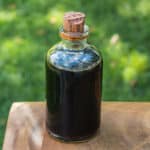
Dawn Sodt
I made this last year for the first time and it was so delicious that we ran out way too soon. This year, I’m going crazy with quarts and quarts of the stuff. I’m also experimenting with adding Candy Cap mushrooms to the jars, about a tablespoon each quart. Might be too much. Maybe I’ll do a few with just a teaspoon each. I love learning how to use our native plants and even common garden for flavorings.
Alan Bergo
Thanks Dawn.
Shanan
Can maple syrup or honey be used instead of brown sugar?
Alan Bergo
Yes.
Beth Siebenaler
Hello, are cones from Scots Pine okay to use? Can't find much about the safety/toxicity.
Alan Bergo
I have yet to find a species that’s causes problems.
Beth Siebenaler
Hi Alan, I harvested some green pine cones today which I believe to be from a Scots Pine tree. I can't find much info online on safety/toxicity, and want to be sure they are ok to use? Have you ever tried them?
Also, I have spruce trees all around me, yet haven't noticed cones on them! Am I missing something? (I'm local to your area.)
Thanks!
Alan Bergo
Look at the top of the spruce trees for the cones. Sometimes they hide. It also makes them difficult to harvest from.
Ed
Thanks for this recipe! I made this 2 years ago from the Balsam fir tree in front of my house. I like the flavor of Balsam Fir mugolio better than pine. Pine is more mild.
Alan Bergo
Thanks Ed!
Chris Logan the Manitoban Canadian
Hi Chef Alan. I picked mainly Balsam Fir cones this year. I found a spot I was able to get to by parked on side road by trail (all back roads travel still banned because of fires in Canada & a long dry season of Spring) and picked them. Yes, very sappy suckers. Even the silicon gloves dislike it. I have 2 questions. (1). I have to add water this year. I didn't last year. Is it due to the dry season & yet these grow, but weatherly are less watery? (2). Can I freeze the cones in sealed bag & make syrup with them some other day up to how long? (3). Do you ever use additions to your syrups? I already did a few jars with diverse adds: [a] Orange rind. [b] Fresh ginger slices. [c] Lemon zest. Thank you for the great things I learning as I grow in forager levels. lol
Alan Bergo
Hi Chris. You can freeze cones to use later, I've definitely done that. It may actually make the liquid more easily accessible to the sugar. I don't typically add anything as I like to keep the flavor pure.
Andrea Mobeck
Great idea! I'm going citrus this time. Thanks Canada!! ❤️✌️
Marina
Last year I made a gallon with Doug fir cones. It’s delicious. Much better than the $40 bottle of the authentic Mugolio I bought. I didn’t add water, cones had plenty of moisture.
The flavor mellows as it ages. The fresh syrup is bold and off putting for some (not me). It makes an outstanding lemonade. I also use it with my conifer infused vodka for a 2-fir 😄
Alan Bergo
Haha 2fir.
The jars I’ve forgotten about basically taste the same as others not aged as long. It’s a really forgiving method and I’ve never had any turn alcoholic or anything like that. Even though the jars can pop in some batches from carbon dioxide buildup I suspect there just isn’t enough water to make things hospitable to vigorous fermentation. If you add (too much) water though, which I have, it ferments vigorously and the flavor definitely changes.
Jo
I am excited to try this! My green pine cones are long and skinny. Does it make any difference if I chop them into smaller pieces so they fit better in the jar?
I am struggling measuring the volume of pine cones to get the right amount of sugar. I’m guessing that is not an exact science.
Alan Bergo
Hi Jo, definitely cut them up to make them fit better. As for the proportions, this might be the easiest recipe on my website. Get a scale, weigh out 8 oz pine cones. Weigh out 16 oz sugar. Mix it together and put in a jar.
jo
Thank you for your reply. I read 2 cups of each and didn’t notice the weight measurement difference. That was easy. All jarred up! I can’t wait to try it.
Emma
Is it safe to make this with Cedar of Lebanon or Deodar Cedar cones? That’s all I have access to but I’ve heard people say either not to use cedars or that they will have a “medicinal” taste if used.
Alan Bergo
I’ve made some good ones from cedars. AZ cedar was really dry so I had to add additional liquid. Great flavor though, obviously yours may be different.
Vicki
Hi Chef! I live in the UP on an acre of 50 ft pines, most Red pines I think. I usually find a few green ones on the ground in the spring, but this year it's overwhelming. Pockets full every time I'm in the yard. So I see you harvest them off the tree, but that's not possible here so I hope I'm not wasting my time! I have about 6 quarts started, using organic brown sugar. Thanks for the recipe!
Angie
I'm not sure if you are aware, but I just found out you can "tap" black walnut trees during certain times of the year. The liquid gets cooked down in basically the same way maple syrup is harvested and made from maple trees! I'm not sure on the particulars, but you may want to check it out!
Alan Bergo
Yes it's ok, kinda butterscotchy. Box elder can be tapped and reduced the same way. Both BE and BW require more sap than maple.
Cody Danielson
Hello! Thanks for all the info - trying it now! I’m going with the vacuum sealer for this, just did my first batch today. I’m assuming it was correct to vacuum out the air, but I left one sealed with vacuuming out the air just to see what the difference might be. Can you confirm that it was correct to vacuum the air out before sealing? Just want to ease my mind
Alan Bergo
Hi Cody, either way works. Also works just fine in a jar.
Bill
Alan! I’ve got a unique question! So I first learned about this last year! I was obsessed! I collected 3 jars worth, filled them with sugar and set them in the pantry! Burped them every couple days as the fermentation. However never got around to the final step. Boiling it, so in short they’ve just been sitting in the pantry for about a year! What’s are your thoughts? Can I still boil and make syrup out of it after a year
Alan Bergo
Hi Bill, yes I have a jar from last year I'm about to process. It should be just fine. Just make sure to inspect the cones for any mold beforehand, which, while harmless after cooking, can affect the flavor if it's been sitting for a period of time.
Nina
Hello (sorry I can't find my previous comment) ! Regarding the solid / hard, green Scots pine cones I have in my region in this season : are they toxic if boiled ? I'd like to make a syrup.
Thank you very much
Alan Bergo
I haven’t used cones this old as it isn’t traditional and I don’t recommend using them. Hypothetically, if you were to boil pine cones that are too hard to cut it, it would have no effect on their edibility, from a safety perspective.
Jess
This is so delicious! Do you think that this could substitute maple syrup in the acorn tort recipe you posted?
Alan Bergo
Yes.
Dan
Hi. I'm having trouble troubleshooting with a new batch of pine cones from a different species getting any liquid out. Hoping you can please advise. Would be very appreciative for any help.
Last year I gathered a few pine cones (of an unknown species but not eastern white pine maybe a dozen cones) when I was down at the Connecticut shore and made a delicious syrup as per the instructions in your book. These cones were not green as much as reddish brown with a hint of green here and there.
This year I happened to be up in Massachusetts and found Eastern White Pine cones from branches that must have come off during a storm.
Unlike last year the cones were bigger about half a pinky size, and on the outside were a little more brown but still soft and pliable. If you broke it open with your fingers they were green they had a bit of sap although not excessive around the outside. taking a taste of the inside it, didn't taste excessively bitter.
I was told on I naturalist these are first-year female cones and not easily accessible because they're typically at the top of the tree so it must have been the storm that brought them down. I must have something like a cup worth of cones which I matched with a cup of maple sugar.
My question is this:
Unlike last time with lesser number of a different species of cones and the same sugar wherein I saw a lot of liquid extraction in the first day or two.
Here I'm using the same ratio of sugar to cones as in your book like I did last time but I see virtually no liquid extraction! What's going on?
If my cones were hard and old I would think it's a problem but they were bendable and green inside. Also sticky to touch one gathering.
Are they really still too old or do I have to do something else? I'm just nervous that they're not producing any liquid when the other guys did it in like a day or so.
I would be so very grateful for any advice I can get from you. I'm hoping there's a way to salvage this and that they're not junk.
I love your entire cookbook I purchased it.
Alan Bergo
Hey Daniel. I’d give it a few weeks. Some cones are a little different from others.
Ag
Hi Alan! I’ve made mugolio a few times now using the instructions from this great blog post, and just found two batches I forgot about. One is about a year old and has been at room temp and I did not strain it out yet (still has the cones) and the other was strained but has been in the fridge since straining for about a year now. Are they still edible/does it go bad? I wasn’t sure what the shelf life is if they were not canned. Thank you!!!
Alan Bergo
They're fine.
Ag
Thank you!!!
Jeff
Try them just as they are. The pine cones are sweet, soft, and chewy. It's a bit like the opposite of a preserved lemon. I personally like it more than the pine jelly.
Marina
How did they taste? Different than if you hadn’t forgotten? I’ve noticed the flavor changes as it aged (strained) .
I’m about to make a batch with Doug fir and am wondering what happens to the taste if fermentation goes longer.
I bought the real deal Mugolio and found it to taste like molasses candy. I prefer my doug fir cone syrup.
Thank you Alan
Alex
I'm from Austria, where we traditionally make Zirbenschnaps. We don't make it with syrup, but soak cones directly in alcohol.
To make it, you harvest cones from Pinus cembra (which we call Zirbe), when they are already brown but not hard and woody yet (early summer).
Then the cones are cut into pieces and put into alcohol. You want to use something without a lot of taste, e.g. Wodka (we have Ansatzkorn which is specifically made for stuff like this).
Then leave the cones in the alcohol for a few weeks and filter it.
Finally add sugar to make it a little sweet.
There are also other liquors made with different cones. For example we also make Latschenlikör with the cones of Pinus mugo (grows high in the mountains and is very small).
Alan Bergo
Hey thanks so much for commenting Alex, I've been trying to find examples of how that's traditionally made.
Sherry
Hi Alan,
Thanks for this recipe....We made several batches this spring using different types of cones...I am not sure what I am doing wrong but we are having a problem with the finished syrup crystalizing and therefore not useable although the flavors are delicious.
Thank you,
Sherry
Alan Bergo
Hi Sherry. If it crystalized you're cooking it too long. A small amount at the bottom is acceptable and can happen from time to time, but being so crystalized it's not usable shouldn't be happening. It isn't wasted though, you can just add a splash of water, scrape the jars into a pot, heat them to melt it and re-jar.
Sherry
Thank you for the quick reply Alan! Ok, I did scrape out the crystals as you said and just heated enough to melt them and re-jarred and same thing happened. I will just heat up a jar when I want to use some of the syrup but I want to figure this out for next year as we live in the mountains and have so many pine trees it would be fun be able to do this and hand out as gifts. The taste of the syrup is wonderful.
Alan Bergo
Ok, so I don’t do it at home, but a little corn syrup will stabilize things and stop it from crystallizing. Also you may need to just add more water.
Tammy
I haven't used your recipe yet since it's currently winter and the cones aren't out yet. However, another video I watched about this syrup said NO water should be added. Just an idea to try.
Alan Bergo
If you haven’t made it then why are you eating my recipe? And for reference, adding water is the only way to remove or prevent crystallization. Furthermore, if you haven’t made it, why would you advise people on how to do so?